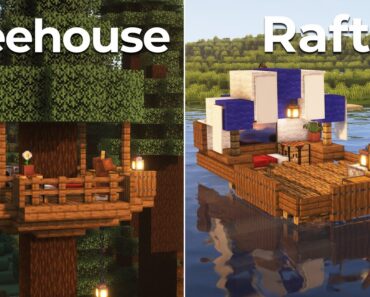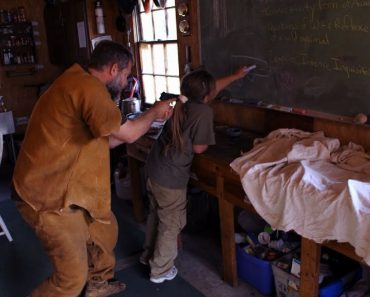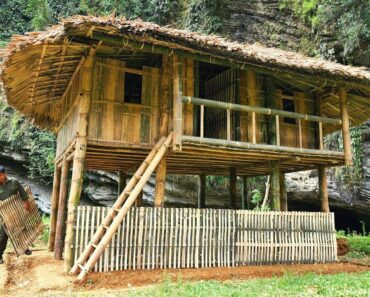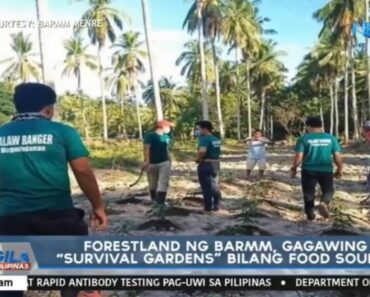Many people today yearn to leave the hustle and bustle of the corporate world and embrace a simpler lifestyle that is closer to nature. For some, this means moving to a rural area and starting a small farm that can sustain them and their family. However, while the idea of living off the land may seem idyllic, the reality is often very different.
Building a successful and sustainable small farm involves a lot more than just finding a plot of land and planting crops or raising livestock. It takes a tremendous amount of hard work, dedication, and perseverance to turn a barren patch of soil into a thriving farm that can provide for a family’s needs. Moreover, there is often a steep learning curve that involves lots of trial and error and dealing with unexpected challenges and setbacks.
One of the biggest challenges facing new farmers is the lack of information, equipment, and skills needed to make their farm successful. Unlike other professions, farming is not something that can be learned simply by reading a book or watching a video. Instead, it requires hands-on experience and a willingness to learn from mistakes.
For example, raising livestock on a small farm can be a daunting task for someone who has never done it before. Birthing baby pigs or cows, for instance, is a complex process that requires a certain level of expertise and knowledge. Without proper training or guidance, it can be easy to make mistakes that could put the lives of the animals at risk.
Similarly, figuring out which crops to grow on a new homestead can be a tricky task, especially if the soil or climate is not suitable for certain plants. Finding the right balance between crops that can generate income and those that are sustainable in the long run can be a challenge that requires trial and error.
How others started
Several years ago, Dan and Laura Easton visited the Ozarks and were so taken by the experience that they purchased a 25-acre homestead in Avilla, Arkansas. Both of them had been working in the high-tech, high-stress corporate world, but they yearned for a simpler life that was closer to nature. While Laura decided to keep her job and health insurance by working from home, Dan took a giant leap and became a full-time farmer and rancher.
Over the course of two years, the Eastons had to learn a completely new set of skills, becoming low-tech problem solvers in the process. They soon realized that the best way to share their beginning homesteading experiences was with others who were just starting out like them. They began teaching classes that exposed want-to-be back-to-the-land pioneers to the trials and successes of finding the right property, building infrastructure, buying equipment, growing crops in small areas, choosing livestock, and protecting them.
Throughout their journey, the Eastons had to deal with a number of successes, failures, and do-overs. They learned that internet research, asking knowledgeable neighbors or mentors, and figuring things out on their own were necessary survival tools. They have a wealth of practical details, hands-on training, and useful information to share with potential homesteaders. Their stories and classes cover everything from keeping guard dogs from killing chickens to designing a 500-gallon gravity watering system and growing plants using hay bales.
Despite all the challenges they faced, the Eastons are able to look back and laugh at their mistakes and reflect ruefully on how much they learned that wasn’t taught in the corporate world. They have become successful homesteaders who are now eager to share their experiences with others who are just starting out on the same journey. By offering their knowledge and expertise to new homesteaders, they are helping to create a community of like-minded individuals who are working towards a more sustainable and fulfilling way of life.
Earn Your Food Independence NOW!
Obtaining that much-needed progress
According to Dan, one of the biggest challenges they faced on their homestead was fencing, getting electricity where they needed it, and moving water around. His previous job as a UI designer didn’t equip him with the skills necessary to keep animals contained, move water, or electrify remote buildings. The couple soon realized that in rural areas, they had to learn to do things themselves or be prepared to wait for months and spend a lot of money.
One of the early challenges they encountered was finding a sustainable heating design and cutting and storing wood for the winter. With the help of their neighbors, they decided on an outdoor boiler that could pipe heat to several buildings. Dealing with extreme weather was another difficulty, as they had to grade washed-out roads and provide protection for their livestock from the elements.
As time went on, Dan became more skillful at finding better and more cost-effective ways of doing things. He designed a rain-barrel cistern that collects water off the house roof and a sump-pump system to move the water up to a series of holding tanks on the hillside. By using gravity, the system is now almost perfect, and Dan can open a valve to direct the water flow to the goat pen, greenhouse, or wherever it’s needed, eliminating the need for carrying heavy buckets of water or draining the well aquifer. This innovation made the watering process much easier and less expensive.
Getting livestock
The Eastons had a strong desire to keep animals on their homestead, so they started with pigs, then chickens, and eventually milk “goats” that they purchased at a nearby livestock auction. Laura was particularly interested in milking sweet-natured goats to create homemade soap and cheese. She extensively researched milk goats and knew exactly what breeds she wanted to buy. She even brought pictures of the right goats to the auction to ensure that they made the right purchase.
However, things didn’t go as planned. When they turned the “goats” loose in their pen, they discovered that the animals had fleece instead of hair, like goats. They had accidentally purchased sheep instead of goats. The Eastons raised the sheep for a few months, but eventually, they ended up as dinner. This experience taught them a valuable lesson: always ask lots of questions and make sure you know what you’re getting before buying animals.
Chickens were another animal the Eastons started with and added to their homestead early on. However, they quickly discovered that predators, both wild and tame, were regularly visiting the chicken pen for a quick and easy meal. In response, they decided to get Great Pyrenees dogs to protect the chickens. Unfortunately, the Pyrenees were too protective, and they loved the chickens so much that they would lick the birds until they were a soggy mess. Some of the chickens were so traumatized that they died from excess puppy love. Eventually, Dan had to build a circular dog run around the chicken enclosures to keep the birds safe and the Pyrenees from overprotecting them.
The Buff Orpingtons have since thrived and produced more eggs than the Eastons can use. They are hoping that the hens, with the help of their two roosters, will start a chicken family. They have incubated eggs and raised chickens in rotation to ensure the flock doesn’t age out. The chickens provide nutrition for the carnivores, including their numerous dogs and the Eastons themselves.
Laura also shared that they wanted to raise pigs and had read about Kunekune pigs in various magazines. They thought the breed sounded like a perfect fit for their homestead since they are sweet-natured and don’t root. Laura contacted a local breeder, who was incredibly helpful and willing to educate them about the breed. Eventually, they purchased their first pigs and raised a brood sow, who eventually had her first litter. Now, they are breeding and growing their own Kunekunes.
Growing plants
The Eastons faced a challenging environment when it came to growing crops on their land due to limited topsoil and rocky dirt. To overcome this obstacle, they experimented with different methods, such as planting in the ground, raised beds, straw bales, and a greenhouse.
Through trial and error, they discovered that using hay or straw bales was the most successful method. The bales were shaped with walk-throughs and anchored with fence posts, and trellises were fastened to them. After several weeks of watering, the bales were ready for planting, with seeds and seedlings from the greenhouse planted in the wet centers and covered with potting soil. Tomatoes and squash thrived in this environment, with the tomato vines growing above the trellises and the squashes winding into them and hanging down.
The Eastons also made use of composting, collecting and composting bedding, leaves, and manure from their animals under a black plastic tarp. This mixture broke down quickly in the summer heat and became a rich, loamy dirt that was ideal for growing impressive plants. They also discovered the value of fodder, a legume mixture composed of bulk whole grain, barley, wheat, or oats that could be bought cheaply.
Dan set up a drip watering system in the greenhouse to grow trays of plants for the grass-eating animals. Even in winter, the pigs, goats, and chickens enjoyed green treats several times a week, which helped to keep them healthy and reduced the cost of buying alfalfa and other hays. Seeds were started early in the year in the greenhouse, and as the threat of frost diminished, a few tomatoes and squash were transferred outside and planted in one of the gardens every week.
By planting in waves, the Eastons were able to prevent everything from coming ripe at one time, ensuring a steady supply of fresh produce throughout the growing season. Despite the challenges of their environment, the Eastons’ dedication to finding innovative solutions has enabled them to cultivate a thriving and sustainable homestead.
Preserving the harvest
The Eastons encountered a common issue faced by many gardeners – a surplus of summer produce. Despite their careful planting, they found themselves with an overabundance of ripe squash and tomatoes that needed to be preserved before they went bad. To avoid wasting their harvest, the Eastons turned to various preservation methods such as blanching and freezing, drying, canning, and freeze-drying.
Out of all these methods, the Eastons found that freeze-drying worked best for their needs. Although it is a more complex process that can take up to 24 hours to dry just a few trays of vegetables or meat, the food lasts longer than that preserved by other methods. Laura noted that freeze-drying equipment can be quite expensive, often costing several thousand dollars, but the investment was worth it for their family’s needs.
So, do you think you could give it a try?
The Eastons’ homesteading journey was a challenging but rewarding experience, where they learned to tackle various obstacles and develop creative solutions. Their inspiring story serves as an example to those who are interested in pursuing a sustainable and fulfilling lifestyle on a homestead, proving that with determination, commitment, and resourcefulness, it’s possible to overcome any hurdle. So, are you up for the adventure of homesteading?



























